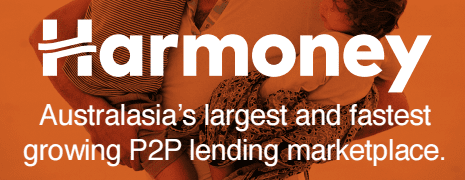You could fit the entire population of New Zealand (4.5 million people) in the New York City boroughs of Queens and Brooklyn. It is not a big country and certainly not where you would expect to find one of the emerging world leaders in marketplace lending. But Harmoney, celebrating their first year in business, is quickly becoming a force to be reckoned with.
I caught up with the Harmoney team this week to discuss their one-year anniversary and get an update on how they are doing. When I covered their launch 12 months ago I said they were the first platform I had ever seen launch with $100 million in lending capital before making a loan.
At that time they said they would deploy that entire $100 million in their first year. True, to their word, CEO Neil Roberts shared that they crossed that milestone two weeks ago. Here are some of the highlights from Harmoney’s first year in business:
- $1 billion in loan inquiries
- $100 million in approved loans
- 7,200 loans issued ($14K average size)
- 10,000 retail investors, 3,000 logging in several times a day
- 100,000 accounts created on their website
Harmoney was the first platform to be granted a P2P lending license by the New Zealand regulator, the Financial Markets Authority (FMA). The FMA has since granted two more licenses but Harmoney is the only company operating today. They have also recently been granted an Australian Credit License and will be launching operations there shortly.
Strong Interest from Retail Investors
From the start Harmoney was focused on institutional investors. They saw that as the best way to scale their business. But Neil said they have been pleasantly surprised by the strong interest from retail investors. They have several thousand very passionate investors now which has actually led to the share of retail slowly increasing to close to 40% of the total last month.
New Zealand does not have the same restrictions as the United States and borrowers are able to tell their story in free format text. Retail investors appreciate reading these stories and getting to know their borrowers better, just like the early days of Lending Club and Prosper.
While there are some online tools for retails investors there is no API as of yet and no way for investors to fully automate their investing. This will come eventually, but today investors must login to their accounts to make a new investment.
Now, while it is quite an achievement to grow from zero to $100 million per year but to do so while maintain high credit standards is what is most important. Neil shared a graph that showed their estimated defaults versus actuals and losses are coming in below expectations. This is the piece that everyone will be watching most carefully.
A Market Ripe for Disruption
One of the curious things about both New Zealand and Australia is the interest rates that banks have been charging. Super-prime consumers in these countries will regularly be charged interest in excess of 10% for unsecured personal loans. This leaves a lot of room for companies like Harmoney to disrupt the status quo while providing investors the possibility of earning solid double digit returns.
The first Harmoney loan was actually funded by US investment manager Blue Elephant Capital. They have also P2P Global Investments of Eaglewood, led by Simon Champ, as a major investor that in my mind is a big stamp of approval. They run the largest P2P lending closed end fund on the planet and have a very rigorous due diligence process. There are several other large investors including a leading New Zealand bank called Heartland.
The Harmoney team realizes that they can never get to the scale of a Lending Club in a country the size of New Zealand or even Australia for that matter. So, they are not looking for hundreds of institutional investors to come on board. They would like to add a few more to their existing stable and they hope to have some announcements on that front shortly.
Soon after I spoke with the team they had a whole slew of media people coming in to their office for a formal presentation about their first year. There is a great deal of interest in what Harmoney is doing in New Zealand and this milestone will be greeted with plenty of coverage there.
Harmoney has certainly come out of the gate strong and achieved a lot in their first year. They have attracted a good balance of institutional and retail investors. If they can continue to keep their defaults at or below projections they will likely be the dominant force in P2P lending down under.



